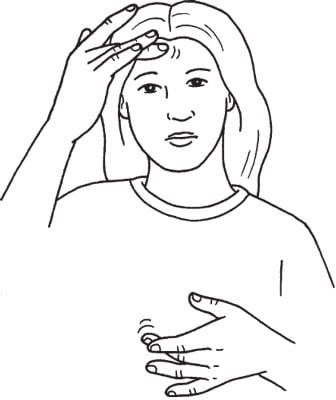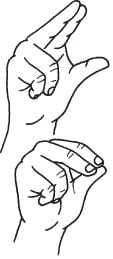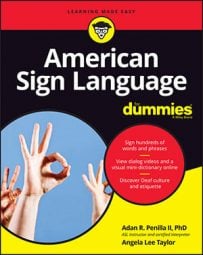Another example is the word no. The speed at which you shake your head from side to side, with eyes open or shut, can say a lot about the degree of no. Quick, short body movements show an emphatic message; an exaggeratedly slow motion with an exaggerated facial expression conveys a similar message.
In a word, the speed of the sign displays various tones. Check out the illustrations of these signs:
Don't know.

This Sign should convey an actual look of not knowing. It makes the Sign more authentic.
Sick.

Both hands move in a small circular motion. One hand touches the head while the other touches the stomach. Looking nauseous as you do the sign. The facial expression is the ticket to signing this term correctly.
No.

When you sign the word, close your eyes if you want to make it more emphatic. This sign can be made as gentle as telling your favorite niece, no, or as harshly as possible by telling a pest, NO! Attitude is everything in ASL.

